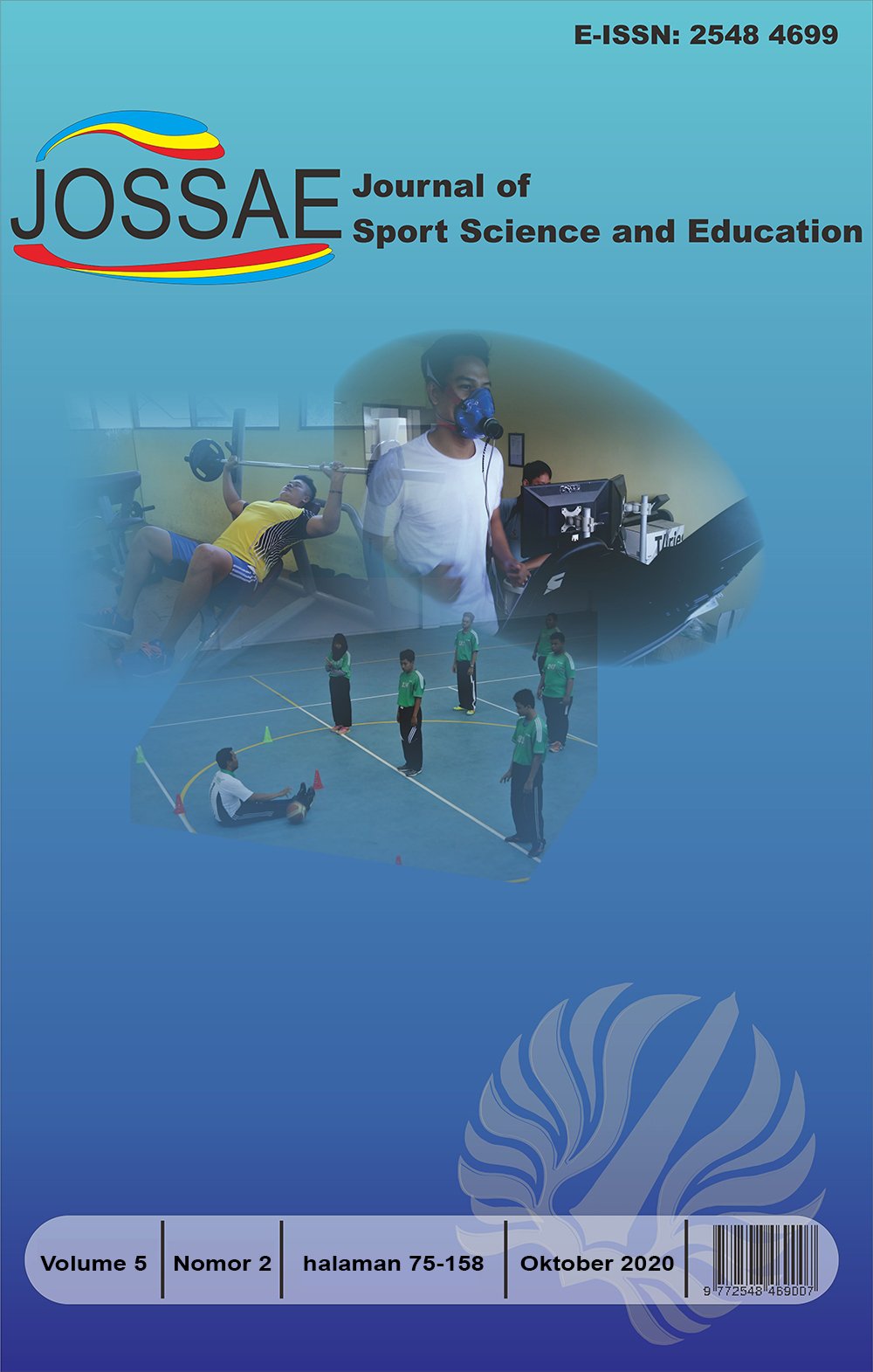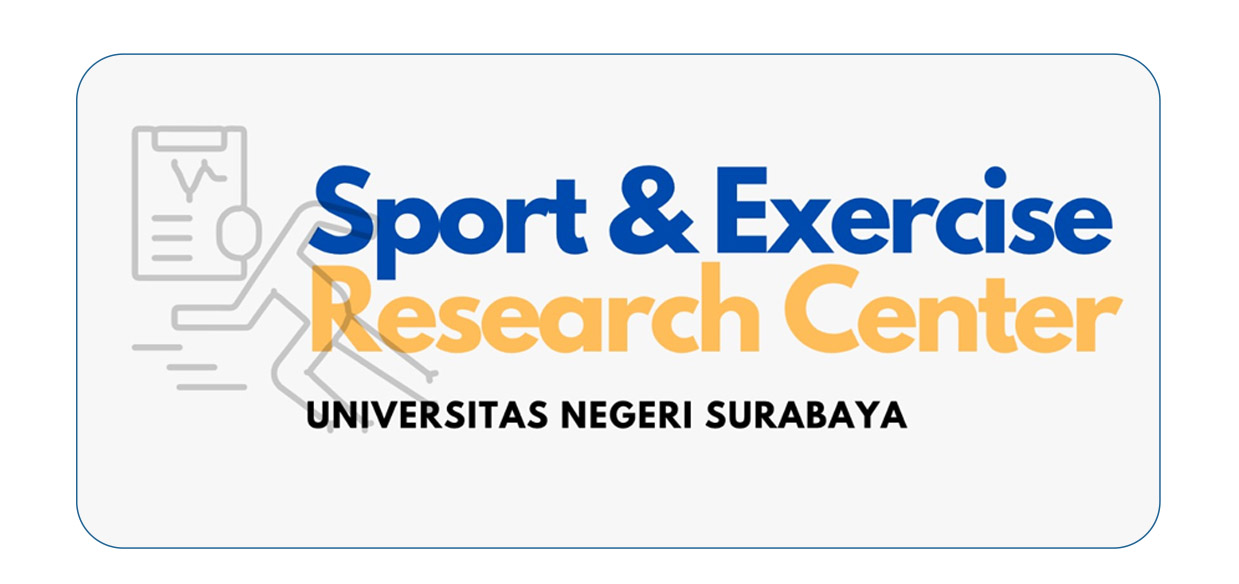Analisis Hubungan Tingkat Kesegaran Jasmani terhadap Hasil Belajar Siswa
DOI:
https://doi.org/10.26740/jossae.v5n2.p75-82Keywords:
learning outcomes, physical fitness, studentAbstract
Student academic problems have always been a concern of the government and teachers, various methods and design of learning that are used in improving academic achievement and student learning outcomes. This study examines the relationship of physical fitness to student learning outcomes. The number of samples 28 people selected from the population of 35 people with purposive sampling technique. Data collection techniques using 5 physical fitness test instruments and for learning outcomes taken from the results of midterm exams. Data analysis techniques used the Kolmogorof Smirnof One Sample Test and Pearson Spearman Correlation Test. The results showed that the highest physical fitness score of 24 was included in the very good category and the lowest score was 13, which means it was still lacking, the highest average student learning outcomes were 79.92 and the lowest average value was 72.28. While the Correlation analysis shows the value (r) 0.304 with a probability level (0.005) <?0.05 so there is a significant relationship between the two variables. Based on the analysis it is concluded that there is a relationship between the level of physical fitness with student learning outcomes, the better the physical fitness, the better the student learning outcomes will be.
References
Alamsyah, D. A. N., Hestiningsih, R., & Saraswati, L. D. (2017). Faktor-Faktor Yang Berhubungan Dengan Kebugaran Jasmani Pada Remaja Siswa Kelas Xi Smk Negeri 11 Semarang. Jurnal Kesehatan Masyarakat (e-Journal), 5(3), 7786.
Ãlvarez-Bueno, C., Pesce, C., Cavero-Redondo, I., Sánchez-López, M., MartÃnez-Hortelano, J. A., & MartÃnez-VizcaÃno, V. (2017). The Effect of Physical Activity Interventions on Childrens Cognition and Metacognition: A Systematic Review and Meta-Analysis. Journal of the American Academy of Child & Adolescent Psychiatry, 56(9), 729738. https://doi.org/10.1016/j.jaac.2017.06.012
Arifin, Z. (2011). Penelitian Pendidikan Metode dan Paradigma Baru. PT. Remaja Rosdakarya.
Coe, D. P., Pivarnik, J. M., Womack, C. J., Reeves, M. J., & Malina, R. M. (2006). Effect of Physical Education and Activity Levels on Academic Achievement in Children: Medicine & Science in Sports & Exercise, 38(8), 15151519. https://doi.org/10.1249/01.mss.0000227537.13175.1b
Fitri, R. (2017). Metakognitif pada Proses Belajar Anak dalam Kajian Neurosains. Jurnal Pendidikan (Teori Dan Praktik), 2(1), 56. https://doi.org/10.26740/jp.v2n1.p56-64
Gil, E. F. J., Chillón, P., Fernández-GarcÃa, J. C., & Cadenas-Sanchez, C. (2020). Association of Physical Fitness with Intelligence and Academic Achievement in Adolescents. International Journal of Environmental Research and Public Health, 17(12), 4362. https://doi.org/10.3390/ijerph17124362
Gu, X., Chang, M., & Solmon, M. A. (2016). Physical Activity, Physical Fitness, and Health-Related Quality of Life in School-Aged Children. Journal of Teaching in Physical Education, 35(2), 117126. https://doi.org/10.1123/jtpe.2015-0110
Han, G.-S. (2018). The relationship between physical fitness and academic achievement among adolescent in South Korea. Journal of Physical Therapy Science, 30(4), 605608. https://doi.org/10.1589/jpts.30.605
Houdebine, L., Gallelli, C. A., Rastelli, M., Sampathkumar, N. K., & Grenier, J. (2017). Effect of physical exercise on brain and lipid metabolism in mouse models of multiple sclerosis. Chemistry and Physics of Lipids, 207, 127134. https://doi.org/10.1016/j.chemphyslip.2017.06.002
Humaedi, H., Iskandar, H., & Abduh, I. (2019). Pengembangan Model Pembelajaran Outbound pada Pendidikan Jasmani dalam Meningkatkan Kesegaran Jasmani Siswa. Jurnal Inspirasi Pendidikan, 9(2), 117 122. http://dx.doi.org/ 10.21831
Irhas, A., & Anna, N. (2014). Hubungan Status Gizi Dan Aktivitas Fisik Dengan Tingkat Kebugaran Jasmani Siswa Sekolah Dasar (Studi Pada Siswa Kelas Ivb Dan V Mi Al Hikmah Gempol Manis). Jurnal Kesehatan Olahraga, 2(2).
Kyan, A., Takakura, M., & Miyagi, M. (2019). Mediating effect of aerobic fitness on the association between physical activity and academic achievement among adolescents: A cross-sectional study in Okinawa, Japan. Journal of Sports Sciences, 37(11), 12421249. https://doi.org/10.1080/02640414.2018.1554552
Md Azmi, K. N. E., & Abdul Razak, M. R. (2020). Physical Fitness Based on Health and Its Relation to Body Mass Index (BMI) among FELDA Pupils in the Region of Kuantan, Pahang. International Journal of Advanced Research in Education and Society; Vol 2 No 1 (2020): Mar 2020. http://103.8.145.246/index.php/ijares/article/view/8936
Nayak B, S., Miranda, S. A., Fitzrol, O. jon B., Anthony, L., Rao S, G., & Aithal P, A. (2016). The Impact of Physical Activities on the Academic Performance of Medical Students. Online Journal of Health and Allied Sciences, 15(2), 14.
Perez, J. (2019). The Relationship Between Physical Fitness & Academic Achievement in AfricanAmerican High School Freshman Females. Texas A&M University.
Pusat Pengembangan Kualitas Jasmani. (2010). TKJI Tes Kesegaran Jasmani Indonesia. Kementerian Pendidikan Nasional.
Ratey, J. (2018). The Revolutionary New Science of Exercise and Brain. Little Brown And Company.
Schober, P., Boer, C., & Schwarte, L. A. (2018). Correlation Coefficients: Appropriate Use and Interpretation. Anesthesia & Analgesia, 126(5), 17631768. https://doi.org/10.1213/ANE.0000000000002864
Sepriadi, S., Hardiansyah, S., & Syampurma, H. (2017). Perbedaan Tingkat Kesegaran Jasmani Berdasarkan Status Gizi. Jurnal Media Ilmu Keolahragaan Indonesia, 7(1), 2534.
Singh, K., & Bhatti, G. K. (2020). Effect of Physical Exercise Training to Improve Physical Fitness in Overweight Middle-Aged Women. International Journal of Scientific Research, 9(1), 69.
Stern, Y., MacKay-Brandt, A., Lee, S., McKinley, P., McIntyre, K., Razlighi, Q., Agarunov, E., Bartels, M., & Sloan, R. P. (2019). Effect of aerobic exercise on cognition in younger adults: A randomized clinical trial. Neurology, 10.1212/WNL.0000000000007003. https://doi.org/10.1212/WNL.0000000000007003
Tucker, H., Bebeley, S., & Laggao, S. (2017). Children and Adolescents Fitness Skill Level in Physical Activity: A Motivational Concern for Public Health Education. International Journal of Science and Research (IJSR), 6(11), 1822. https://doi.org/10.21275/ART20177770
Wahana, S. (2019). Hubungan Hidup Bersih dan Sehat dengan Tingkat Kebugaran Jasmani Siswa Kelas X di SMAN 2 Lamongan. JOSSAE¯: Journal of Sport Science and Education, 3(2), 103. https://doi.org/10.26740/jossae.v3n2.p103-111
Welis, W., & Muhamad, S. R. (2010). Gizi Untuk Aktifitas Fisik dan Kebugaran. Sukabina Press.
Zhang, J., Zhang, J., Feng, Z., & Guo, X. (2019). Residuals based Kolmogorov-Smirnov and Cramér-von Mises tests for varying coefficient models. Communications in Statistics - Simulation and Computation, 117. https://doi.org/10.1080/03610918.2018.1506031
Downloads
Additional Files
Published
How to Cite
Issue
Section
 Abstract views: 3817
,
Abstract views: 3817
, PDF Downloads: 3219
,
PDF Downloads: 3219
, PDF Downloads: 0
PDF Downloads: 0









